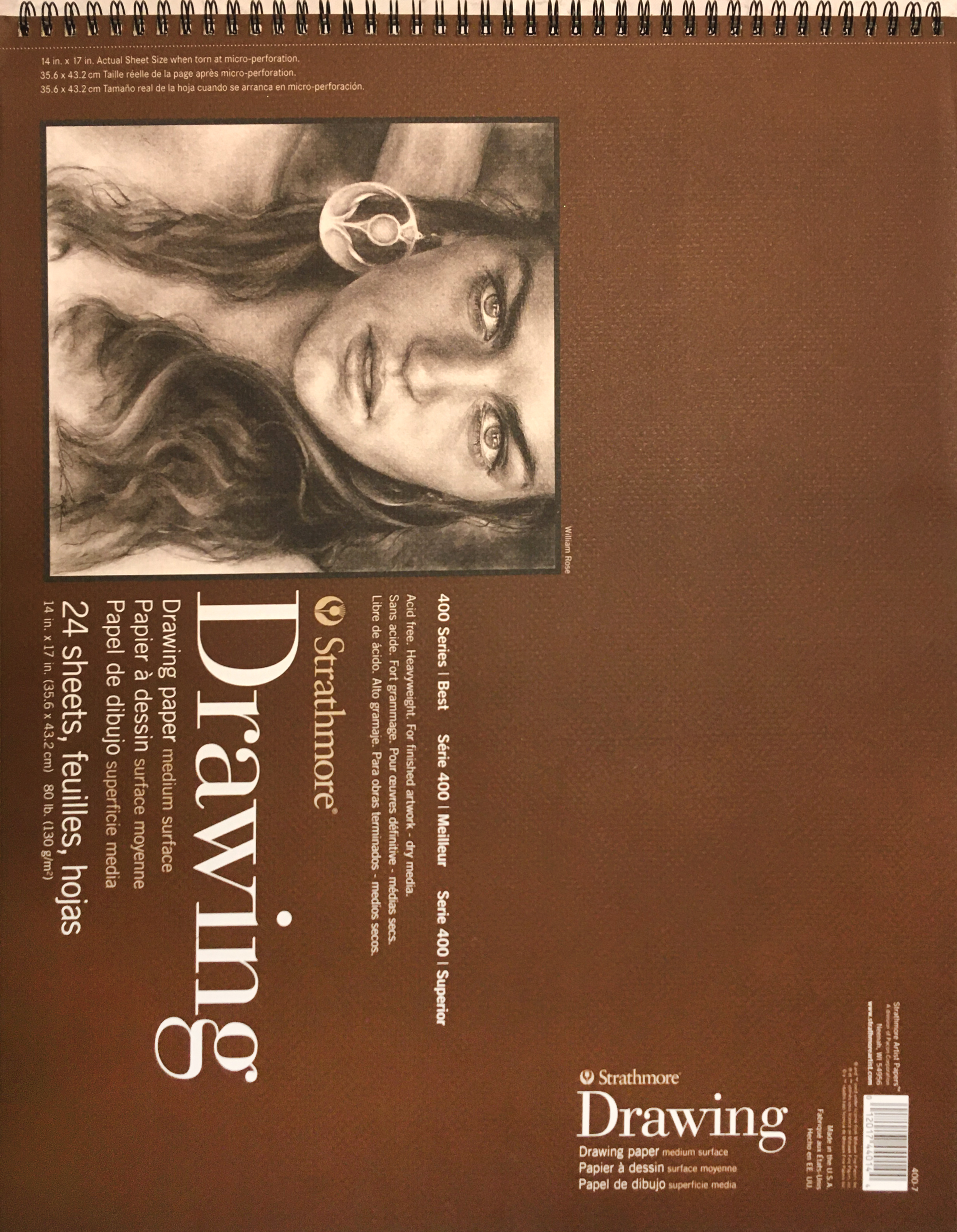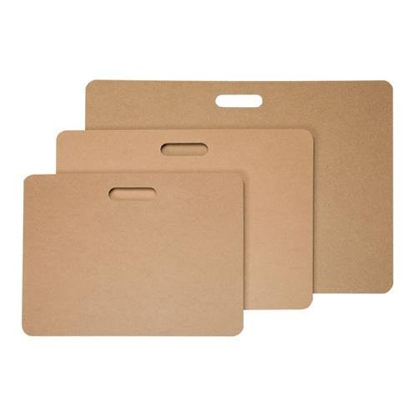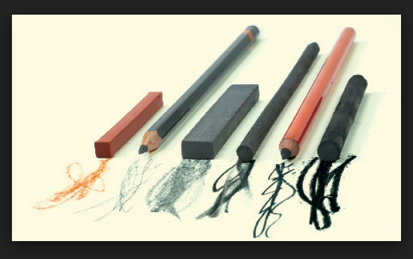1.2: Drawing Materials
- Page ID
- 67692
\( \newcommand{\vecs}[1]{\overset { \scriptstyle \rightharpoonup} {\mathbf{#1}} } \)
\( \newcommand{\vecd}[1]{\overset{-\!-\!\rightharpoonup}{\vphantom{a}\smash {#1}}} \)
\( \newcommand{\dsum}{\displaystyle\sum\limits} \)
\( \newcommand{\dint}{\displaystyle\int\limits} \)
\( \newcommand{\dlim}{\displaystyle\lim\limits} \)
\( \newcommand{\id}{\mathrm{id}}\) \( \newcommand{\Span}{\mathrm{span}}\)
( \newcommand{\kernel}{\mathrm{null}\,}\) \( \newcommand{\range}{\mathrm{range}\,}\)
\( \newcommand{\RealPart}{\mathrm{Re}}\) \( \newcommand{\ImaginaryPart}{\mathrm{Im}}\)
\( \newcommand{\Argument}{\mathrm{Arg}}\) \( \newcommand{\norm}[1]{\| #1 \|}\)
\( \newcommand{\inner}[2]{\langle #1, #2 \rangle}\)
\( \newcommand{\Span}{\mathrm{span}}\)
\( \newcommand{\id}{\mathrm{id}}\)
\( \newcommand{\Span}{\mathrm{span}}\)
\( \newcommand{\kernel}{\mathrm{null}\,}\)
\( \newcommand{\range}{\mathrm{range}\,}\)
\( \newcommand{\RealPart}{\mathrm{Re}}\)
\( \newcommand{\ImaginaryPart}{\mathrm{Im}}\)
\( \newcommand{\Argument}{\mathrm{Arg}}\)
\( \newcommand{\norm}[1]{\| #1 \|}\)
\( \newcommand{\inner}[2]{\langle #1, #2 \rangle}\)
\( \newcommand{\Span}{\mathrm{span}}\) \( \newcommand{\AA}{\unicode[.8,0]{x212B}}\)
\( \newcommand{\vectorA}[1]{\vec{#1}} % arrow\)
\( \newcommand{\vectorAt}[1]{\vec{\text{#1}}} % arrow\)
\( \newcommand{\vectorB}[1]{\overset { \scriptstyle \rightharpoonup} {\mathbf{#1}} } \)
\( \newcommand{\vectorC}[1]{\textbf{#1}} \)
\( \newcommand{\vectorD}[1]{\overrightarrow{#1}} \)
\( \newcommand{\vectorDt}[1]{\overrightarrow{\text{#1}}} \)
\( \newcommand{\vectE}[1]{\overset{-\!-\!\rightharpoonup}{\vphantom{a}\smash{\mathbf {#1}}}} \)
\( \newcommand{\vecs}[1]{\overset { \scriptstyle \rightharpoonup} {\mathbf{#1}} } \)
\( \newcommand{\vecd}[1]{\overset{-\!-\!\rightharpoonup}{\vphantom{a}\smash {#1}}} \)
\(\newcommand{\avec}{\mathbf a}\) \(\newcommand{\bvec}{\mathbf b}\) \(\newcommand{\cvec}{\mathbf c}\) \(\newcommand{\dvec}{\mathbf d}\) \(\newcommand{\dtil}{\widetilde{\mathbf d}}\) \(\newcommand{\evec}{\mathbf e}\) \(\newcommand{\fvec}{\mathbf f}\) \(\newcommand{\nvec}{\mathbf n}\) \(\newcommand{\pvec}{\mathbf p}\) \(\newcommand{\qvec}{\mathbf q}\) \(\newcommand{\svec}{\mathbf s}\) \(\newcommand{\tvec}{\mathbf t}\) \(\newcommand{\uvec}{\mathbf u}\) \(\newcommand{\vvec}{\mathbf v}\) \(\newcommand{\wvec}{\mathbf w}\) \(\newcommand{\xvec}{\mathbf x}\) \(\newcommand{\yvec}{\mathbf y}\) \(\newcommand{\zvec}{\mathbf z}\) \(\newcommand{\rvec}{\mathbf r}\) \(\newcommand{\mvec}{\mathbf m}\) \(\newcommand{\zerovec}{\mathbf 0}\) \(\newcommand{\onevec}{\mathbf 1}\) \(\newcommand{\real}{\mathbb R}\) \(\newcommand{\twovec}[2]{\left[\begin{array}{r}#1 \\ #2 \end{array}\right]}\) \(\newcommand{\ctwovec}[2]{\left[\begin{array}{c}#1 \\ #2 \end{array}\right]}\) \(\newcommand{\threevec}[3]{\left[\begin{array}{r}#1 \\ #2 \\ #3 \end{array}\right]}\) \(\newcommand{\cthreevec}[3]{\left[\begin{array}{c}#1 \\ #2 \\ #3 \end{array}\right]}\) \(\newcommand{\fourvec}[4]{\left[\begin{array}{r}#1 \\ #2 \\ #3 \\ #4 \end{array}\right]}\) \(\newcommand{\cfourvec}[4]{\left[\begin{array}{c}#1 \\ #2 \\ #3 \\ #4 \end{array}\right]}\) \(\newcommand{\fivevec}[5]{\left[\begin{array}{r}#1 \\ #2 \\ #3 \\ #4 \\ #5 \\ \end{array}\right]}\) \(\newcommand{\cfivevec}[5]{\left[\begin{array}{c}#1 \\ #2 \\ #3 \\ #4 \\ #5 \\ \end{array}\right]}\) \(\newcommand{\mattwo}[4]{\left[\begin{array}{rr}#1 \amp #2 \\ #3 \amp #4 \\ \end{array}\right]}\) \(\newcommand{\laspan}[1]{\text{Span}\{#1\}}\) \(\newcommand{\bcal}{\cal B}\) \(\newcommand{\ccal}{\cal C}\) \(\newcommand{\scal}{\cal S}\) \(\newcommand{\wcal}{\cal W}\) \(\newcommand{\ecal}{\cal E}\) \(\newcommand{\coords}[2]{\left\{#1\right\}_{#2}}\) \(\newcommand{\gray}[1]{\color{gray}{#1}}\) \(\newcommand{\lgray}[1]{\color{lightgray}{#1}}\) \(\newcommand{\rank}{\operatorname{rank}}\) \(\newcommand{\row}{\text{Row}}\) \(\newcommand{\col}{\text{Col}}\) \(\renewcommand{\row}{\text{Row}}\) \(\newcommand{\nul}{\text{Nul}}\) \(\newcommand{\var}{\text{Var}}\) \(\newcommand{\corr}{\text{corr}}\) \(\newcommand{\len}[1]{\left|#1\right|}\) \(\newcommand{\bbar}{\overline{\bvec}}\) \(\newcommand{\bhat}{\widehat{\bvec}}\) \(\newcommand{\bperp}{\bvec^\perp}\) \(\newcommand{\xhat}{\widehat{\xvec}}\) \(\newcommand{\vhat}{\widehat{\vvec}}\) \(\newcommand{\uhat}{\widehat{\uvec}}\) \(\newcommand{\what}{\widehat{\wvec}}\) \(\newcommand{\Sighat}{\widehat{\Sigma}}\) \(\newcommand{\lt}{<}\) \(\newcommand{\gt}{>}\) \(\newcommand{\amp}{&}\) \(\definecolor{fillinmathshade}{gray}{0.9}\)THE MATERIALS
Papers
https://en.wikibooks.org/wiki/Papermaking/History_of_paper
Paper is the most popular surface for drawing. Paper can be made out of different substances with each combination having certain characteristics. Some papers are best for graphite pencils, others are well-suited to pen-and-ink, while some are made specifically for charcoal, Conté and pastels. So it is wise to select the appropriate paper for the specific medium.
Paper Characteristics

Paper is measured by the weight of a ream of around 500 uncut sheets. For instance, if a 500 sheet uncut ream weighs 90 pounds, the paper is identified as 90 pound paper. The weight also corresponds to the paper thickness. Typical printer paper is 20 pounds, whereas a quality drawing paper is usually 80 pounds, with sketching paper weighing in around 60 pounds.
https://www.strathmoreartist.com/blog-reader/determining-paper-weight.html
Another important quality of paper is the amount of acid in the contents of the manufactured paper. If you have ever observed a newspaper left outside in the elements, or exposed to direct sunlight, you'll see that the paper turns yellow and begins to break down. This is due to the amount of acid in this low-quality, thin, and inexpensive paper. Artists use this paper for quick sketching exercises. The paper is called Newsprint. Newsprint paper is often used in the drawing studios where models pose and students create multiple, quick drawings, called "gesture drawings." This paper often has a nice "tooth" to the surface making drawing in soft pencils, charcoal and Conté easier and more aesthetic. The archival qualities of Newsprint paper is limited, so this paper is not a wise choice for a finished drawing of quality that may be kept for any future needs.
For more finished drawing, an acid-free drawing paper is the logical choice. For pencil drawing, the Strathmore Series 400 paper pad, or equivalent, is recommended because of the combination of weight (80 pounds), eggshell paper color, and archival qualities. It has a slight texture (tooth) to the surface allowing for detail and enough thickness to take multiple changes and drawing revisions using erasers.
The highest quality drawing papers will be handmade and acid-free. This paper is the preferred choice of professional fine artists desiring a combination of specific surface and weight characteristics and documented archival specifications. Handmade papers come in a variety of surface textures and weights up to 400 pounds. Heavier papers do not necessarily indicate higher quality, so careful selection of the appropriate paper requires research and experience.
Paper textures range from very rough to very soft and smooth, with many varieties between these two extremes. Paper with a texture uses a process called Cold Press. Smooth papers use a process involving heat to create a smooth paper surface and this is called Hot Press.
https://blog.schoolspecialty.com/hot-cold-press-paper-101/
For ink drawings a hard, smooth surface works well. Bristol paper of sufficient weight (thickness) match well with pen and ink techniques since the surface is smooth, the paper is available in archival form as well as many sizes. Another choice when inking is a coated, thick support termed Scratchboard. Scratchboard can be purchased with a white or black coating. If purchases with the white coating, it is prudent to "burnish" the white coating smooth using an eraser over the areas where you will ink. This allows the flexible nib pen to flow smoothly over the surface when loaded with ink. Areas of the white Scratchboard can be painted with black ink and scratched out as well. Sometimes, combining the ink lines and scratched out lines creates a nice combination in an ink drawing. (add shunt drawing) (or Dotson drawing)
Pencil Sharpeners
A great little sharpener is the German-made metal one pictured here. Sharpeners can be electric or manual. Charcoal/carbon pencils should be sharpened with a blade (box cutter) and will continue to break if used in an electric or wall-mounted pencil sharpener.
Erasers

Erasers are made of a variety of materials. The white plastic (rubber) erasers by StaedtlerMars are an all around versatile studio eraser. A kneaded eraser is unique and very useful as well. The kneaded eraser has some very specific uses in the drawing studio, especially when using very soft media like charcoal, Conté and pastels. There are other drawing erasers as well such as the Pink Pearl and the soap eraser. However, my recommendation is to stick with the white plastic and kneaded erasers as your studio erasers.
Blending Tools

Blending tools help create smooth values in your drawing. Paper products, such as paper towels, work well for blending. Fingers are generally not used because of the oils found on the skin surface may transfer to the paper. When this happens, the area in which you are drawing will appear darker in value than adjacent areas. This oil spot is difficult to remove or blend into the surrounding lighter area. So for finished, more precise drawings use a tool to blend rather than your fingers. For a larger, expressive drawing using your fingers may not impact the overall look of your drawing and may connect you more to the process of creating art. My opinion is to grab a large brush in that case, rather than getting into the habit of using fingers to blend.
Blending Stumps

Blending stumps are made of wrapped paper and come in a variety of sizes. Smaller ones are called Tortillions. Stumps allow for large area blending as well as very small, detail work. The tips of the pointed ends and diameter of the stumps are variable allowing for a variety of blending options.
Brushes

Brushes are not just for painting but find uses in drawing as well. Soft brushes are a great way to create incredible, subtle blending with graphite, charcoal and other dry media.
Drawing Boards


Drawing boards are transportable allowing you to work outside on a hard surface you can place on your lap, easel, table, bench, or on the ground.
Dry Media
A medium is the art tool and its accompanying technique (media is plural). Dry media used in drawing includes graphite pencils, charcoal and charcoal pencils, Conté crayons, pastels, and colored pencils.
Pencils

Lead pencils and lead-based paints are both toxic, and thankfully a thing of the past.
http://www.abc.net.au/science/articles/2004/09/09/1195234.htm
The pencils we use for drawing today are manufactured with varying hardness of graphite. The basic #2 pencil is in fact the middle of the hardness spectrum for graphite pencils and equivalent to an HB level of hardness. Pencils are graded by how soft or hard they are, again with HB situated in the middle. From HB, pencils becoming softer, and thus easier to make dark in value, are B, 2B, 3B, 4B and so on. You can really see a difference when working with a 6B (very soft) pencil versus an HB. From an HB, pencils progressively getting harder are H, 2H, 3H, 4H and so on. The hard pencils were often used in drafting since they hold a point, are precise and generally do not smear as easily. These more technical pencils were useful when using drafting tools like French Curves, Compasses, T-squares and rulers. These pencils have little use in the Drawing Studio since they produce a very light mark and can literally damage the paper because of their hard points. So for general studio drawing, using a range of HB through 6B is usually sufficient. Using a pencil designed as a "drawing pencil" has the advantage of using a thicker point or edge of the tip when drawing, whereas a mechanical pencil has a defined width to the tip and is a somewhat less flexible drawing tool. The softness of the lead and general feel of mechanical pencils is appealing and works well for smaller drawings, but not for larger studio drawings.

Graphite sticks are also a versatile drawing tool that allows the artist to use the thick edge or side to block in values. Although somewhat clumsy, with practice this can be an effective drawing too.
Charcoal and Conté

Charcoal comes in Compressed and Vine sticks and pencils. It is also graded for soft and hard qualities the same as pencils. Compressed charcoal is jet black; Vine Charcoal is lighter and must have a fixative sprayed over the Vine charcoal drawing to maintain the details since it is so delicate a medium. Compressed charcoal is more robust in nature and more suited to studio drawing techniques. Can easily be manipulated and blended lending itself to subtle shifts in value and delicate drawing transitions. It has been a staple of academic drawing for centuries and is arguably one of the oldest drawing media used by humans.
Conté is a favorite and also a drawing medium used by students and art masters alike. It comes in a variety of shades, colors and degrees of softness and hardness. It is not as easily manipulated as charcoal and is a bit more permanent when applied to paper. It tends to stain the paper and is difficult to erase. Also, once directly applied it has certain quality that disappears upon blending. So once it is blended, you make a commitment to work with that change on the character of the drawing. This will be covered in the Charcoal chapter.
Pastels and Colored Pencils
Pastels, chalk and colored pencils are used for drawing but will not be covered in depth in this beginning drawing course. Using these media adds color for the creation of the artwork which is best covered in 2-D Design and Color, Watercolor, and Painting courses.

